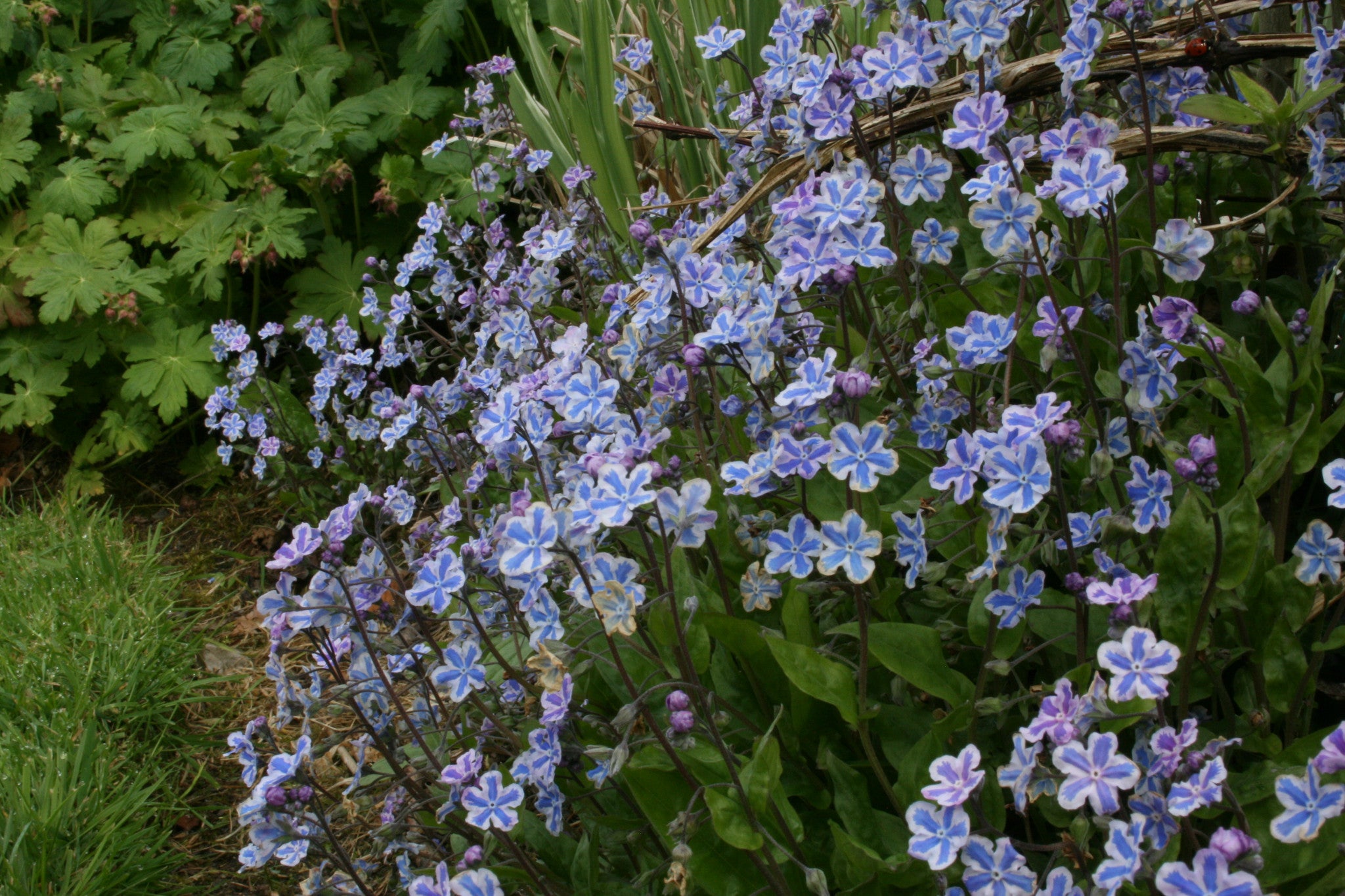Omphalodes cappadocica 'Starry Eyes'
Approx. 0.5 litre pot
About this cultivar:
Omphalodes cappadocica 'Starry Eyes' is a stellar old favorite that displays plentiful airy sprays of fetching Mediterranean blue flowers defined by illuminated white eyes and five spaced round-edged petals, each one with a deep blue interior and a pink rim that eventually matures to white. The dainty bicolored blooms sparkle above long-petioled, dark green leaves shaping an attractive bushy hummock. Irresistible when massed!
- Position: Full sun, partial shade
- Soil: Almost any soil, grows well in Ballyrobert
- Flowers: April, May, June
- Other features: Royal Horticultural Society Award of Garden Merit (RHS AGM)
- Hardiness: Fully hardy, grows well in Ballyrobert
- Habit: Clump forming, mat forming
- Foliage: Semi evergreen
- Height: 10 - 25 cm (0.3 - 0.8 ft)
- Spread: 15 - 45 cm (0.5 - 0.8 ft)
- Time to full growth: 2 to 5 years
- Plant type: Herbaceous Perennial
- Colour: Green, blue, pink
- Goes well with: Ajuga, Geraniums, Phlox subulata, Ranunculus
About this genus:
Omphalodes (om-fa-lo-des) gets its name from the Greek for navel, omphalos, and like,eidos; referrign to the shape of the seeds. Unsurprising then that the common name is navelwort. It is a genus of flowering plants in the forget-me-not family (Boraginaceae). Widely distributed in the temperate Northern Hemisphere. In spring they produce blue or white flowers similar to forget-me-nots.
A favorite of Marie Antoinette’s, Omphalodes prefer moist soils but are tolerant of dry conditions when grown in shade. They can take full sun where summers are temperate (these islands!) and need dappled light elsewhere. Slowly spreading by underground stems, this plant provides lovely and leafy evergreen ground cover. Try using it to enhance the edge of the woods or a rock garden with spring bulbs and Ajuga not far away. We actually grow some of ours near the front of a a border beside Geraniums - to whom they can pass on the flowering baton int he summer. Groundcover Phlox subulata looks great nearby as does Ranunculus.






